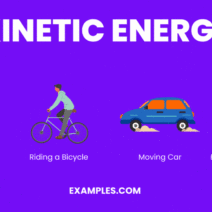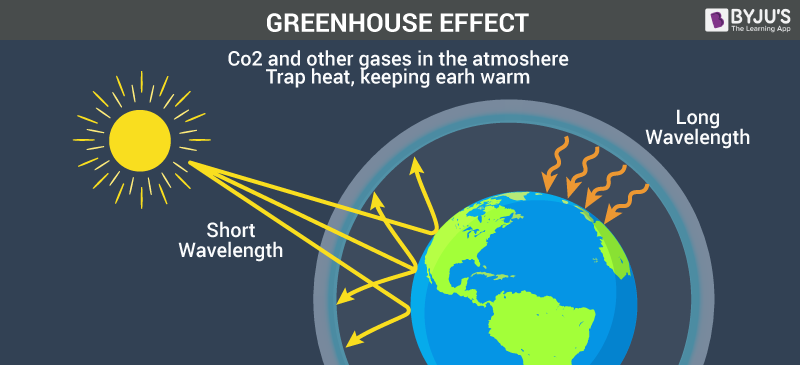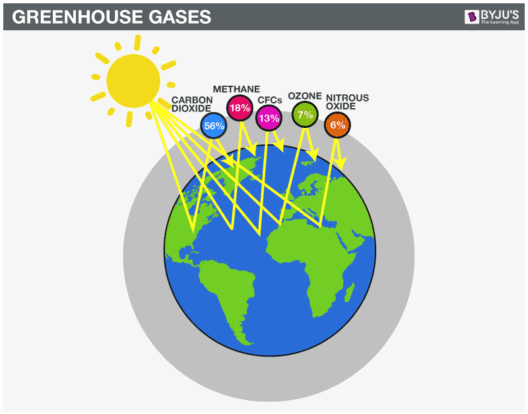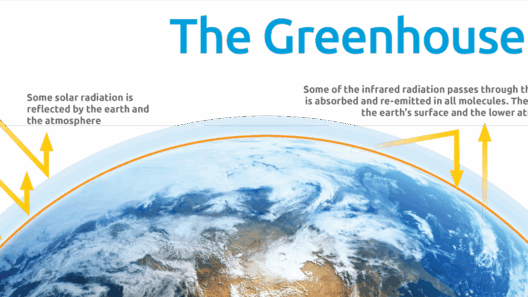Climate change is one of the most pressing challenges of our time, and while we often hear about its consequences, the mechanisms behind this phenomenon deserve a closer inspection. How do gases contribute to the overall greenhouse effect? To answer this query, we must delve into the intricacies of greenhouse gases and their influence on the Earth’s atmosphere.
A delightful question to ponder might be: if our atmosphere were a blanket, how tightly is it woven with the threads of various gases? This metaphor illustrates the situation we face with greenhouse gases. The composition of our atmosphere is akin to a complex tapestry, where each thread plays a crucial role in regulating temperature. When these threads become entangled by excessive emissions, they result in an insulative effect, altering the balance of our climate.
So, let’s embark on a journey to unravel how specific gases amplify the greenhouse effect and pose a daunting challenge for the future of our planet.
Understanding Greenhouse Gases and Their Role
At the heart of climate change is a selection of gases known as greenhouse gases (GHGs). These gases are pivotal in the Earth’s energy balance, allowing sunlight to enter the atmosphere while trapping heat that would otherwise escape back into space. The primary GHGs include carbon dioxide (CO2), methane (CH4), nitrous oxide (N2O), and fluorinated gases. Each has distinct properties and varying capacities for heat retention, known as Global Warming Potential (GWP).
Carbon dioxide is the most prevalent, accounting for a significant share of human-induced warming. Emitted primarily from fossil fuel combustion and deforestation, CO2 can stay in the atmosphere for centuries. In contrast, methane has a GWP more than twenty times that of carbon dioxide over a two-decade period, albeit with a shorter atmospheric lifespan. This highlights a peculiar inversion: while CO2 is emitted in larger quantities, methane’s potency is alarming due to its ability to trap heat effectively over the short term.
The impact of nitrous oxide, though released in smaller amounts, is no less substantial. It is primarily produced from agricultural practices and has a GWP almost three hundred times that of carbon dioxide. Lastly, fluorinated gases, often found in industrial applications, are synthetic and can have GWP values that soar into the thousands. Their cumulative effects are increasingly concerning as they become part of the atmospheric mix.
The Amplifying Mechanism: Feedback Loops
What happens when the concentrations of these gases rise? The consequences are not linear; they precipitate a series of feedback loops that amplify the greenhouse effect. For instance, warmer temperatures result in the melting of polar ice caps and glaciers, diminishing the Earth’s albedo—a measure of how much sunlight is reflected back into space. As more sunlight is absorbed by the darker ocean surfaces, additional warming occurs, leading to further ice melt. This phenomenon demonstrates how an initially small emission of greenhouse gases can escalate into a significant climate crisis.
Another feedback loop involves water vapor, the most abundant greenhouse gas, which significantly contributes to the greenhouse effect. As the Earth warms due to increased GHGs, evaporation rates rise, leading to more water vapor in the atmosphere. This, in turn, creates a cycle where warmer temperatures lead to increased humidity, which then further enhances warming, drawing a somber portrait of our future climate scenarios.
Societal Implications and the Challenge Ahead
The ramifications of intensified greenhouse effects extend beyond environmental concerns; they pose a multifaceted challenge for societies globally. Rising temperatures lead to extreme weather events, altered agricultural yields, and threats to biodiversity. Coastal areas are particularly vulnerable to rising sea levels, forcing communities to adapt rapidly or face displacement.
As the planet warms, the challenge becomes not only understanding the science behind GHGs but also mobilizing a societal response. The question to reflect upon is whether we can collectively commit to mitigating these emissions. Transitioning to renewable energy sources, enhancing energy efficiency, and altering consumption patterns are vital actions that could dramatically reduce GHG concentrations. Such transformations require interdisciplinary collaboration from governments, industries, and individuals alike.
Strategies for Mitigation and Adaptation
Mitigation strategies serve as the cornerstone of combating climate change. Adopting policies that promote cleaner energy, carbon pricing, and reforestation can catalyze significant reductions in GHG emissions. Investments in public transportation and energy-efficient technologies could decrease the reliance on fossil fuels, gradually reshaping the fabric of our energy consumption.
Conversely, adaptation involves preparing for the changes that are already underway. This includes building resilient infrastructures, restoring ecosystems, and creating community support systems to withstand climate impacts. The challenge is formidable: how do we balance immediate human needs with long-term environmental sustainability?
Final Thoughts: A Call to Action
The amplification of the greenhouse effect through gases is a multifaceted challenge that beckons immediate action and profound contemplation. As we dissect the intricacies of GHGs, their contributions to climate change become increasingly evident; the thread of our atmospheric tapestry grows tighter with each emission. Consequently, cultivating awareness and fostering collective action are paramount in addressing the complexities of climate change. Ultimately, the question remains: how can each of us contribute to unwinding the threads of greenhouse gases, leading toward a sustainable future?








